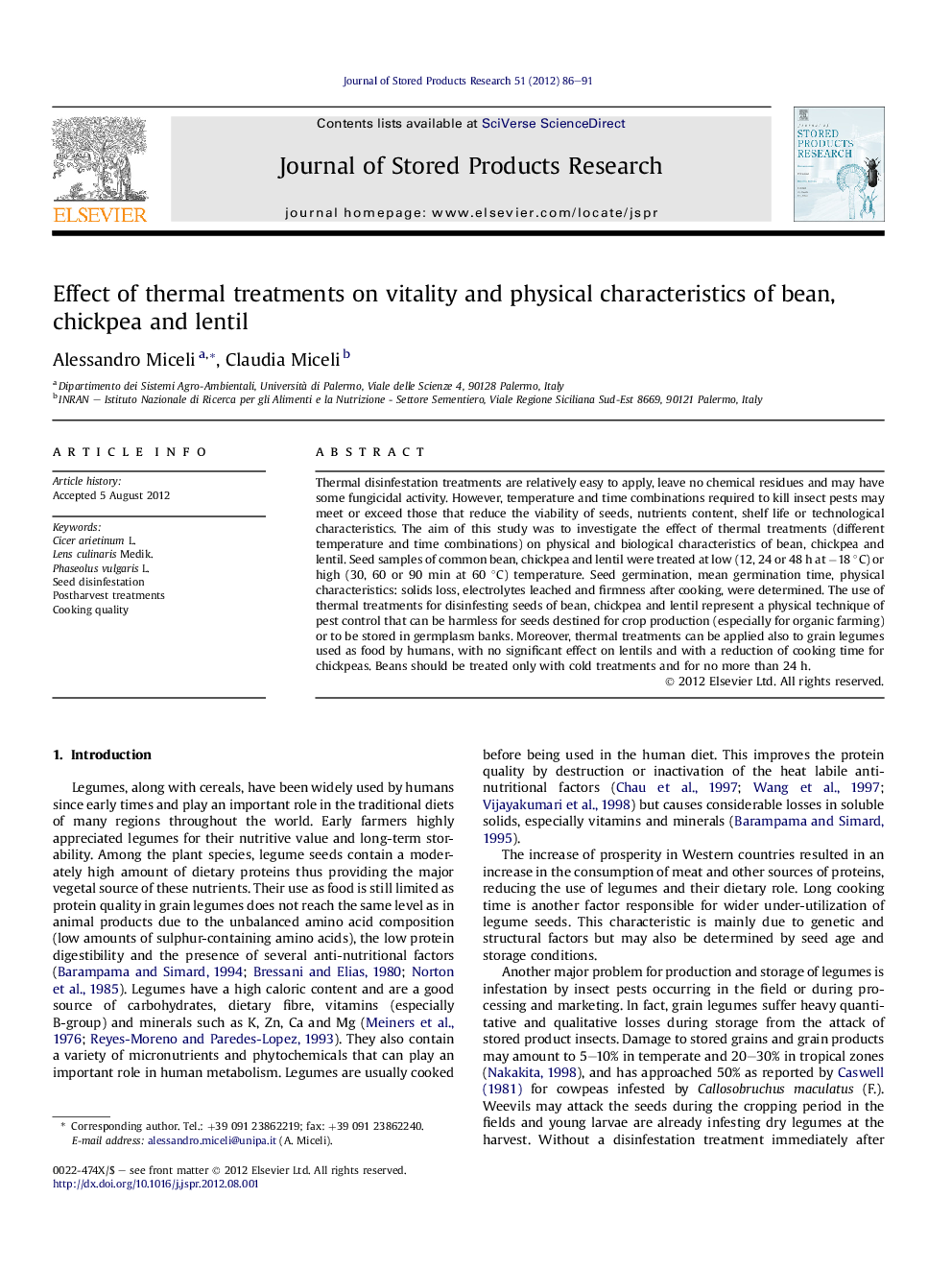| Article ID | Journal | Published Year | Pages | File Type |
|---|---|---|---|---|
| 4517169 | Journal of Stored Products Research | 2012 | 6 Pages |
Thermal disinfestation treatments are relatively easy to apply, leave no chemical residues and may have some fungicidal activity. However, temperature and time combinations required to kill insect pests may meet or exceed those that reduce the viability of seeds, nutrients content, shelf life or technological characteristics. The aim of this study was to investigate the effect of thermal treatments (different temperature and time combinations) on physical and biological characteristics of bean, chickpea and lentil. Seed samples of common bean, chickpea and lentil were treated at low (12, 24 or 48 h at −18 °C) or high (30, 60 or 90 min at 60 °C) temperature. Seed germination, mean germination time, physical characteristics: solids loss, electrolytes leached and firmness after cooking, were determined. The use of thermal treatments for disinfesting seeds of bean, chickpea and lentil represent a physical technique of pest control that can be harmless for seeds destined for crop production (especially for organic farming) or to be stored in germplasm banks. Moreover, thermal treatments can be applied also to grain legumes used as food by humans, with no significant effect on lentils and with a reduction of cooking time for chickpeas. Beans should be treated only with cold treatments and for no more than 24 h.
► Extreme temperatures didn't compromise seeds viability. ► Thermal treatments may affect physical characteristics of grain legumes. ► The legumes studied in this work reacted in different ways to thermal treatments. ► No effect on lentils and a reduction of cooking time for chickpeas. ► Beans should be treated only with cold treatments for no more than 24 h.
